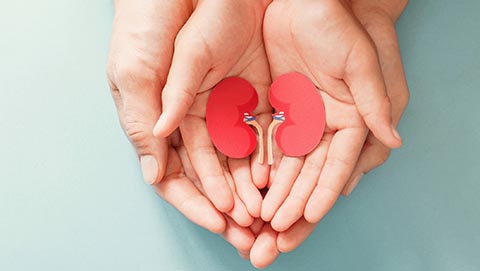
A contributor has an unusual question: how soon can I work with someone who recently donated a kidney? We have lots of information about massage therapy for people on dialysis, and known cautions for transplant recipients, but we don’t know much about how to help living donors. In this episode, we take a look at what it’s like to give up a kidney and what kinds of accommodations for massage that requires.
Resources:
To become an organ donor: www.organdonor.gov.
Mayo Clinic. “Donor Nephrectomy.” Accessed February 11, 2021. www.mayoclinic.org/tests-procedures/donor-nephrectomy/about/pac-20384867.
National Kidney Foundation. “What To Expect After Kidney Donation.” Accessed February 11, 2021. www.kidney.org/transplantation/livingdonors/what-expect-after-donation.
National Kidney Registry. “Compatible Pairs: What is a Compatible Pair?” Accessed February 11, 2021. www.kidneyregistry.org/compatible_pairs.php.
University of California San Francisco. The Kidney Project. “Statistics.” Accessed February 11, 2021. https://pharm.ucsf.edu/kidney/need/statistics.
UNOS Transplant Living. “History of Living Donation.” Accessed February 11, 2021. https://transplantliving.org/living-donation/history.
UWHeath. “Living Kidney Donation: Introduction to Living Kidney Donation.” Accessed February 11, 2021. www.uwhealth.org/living-kidney/introduction-to-living-kidney-donation/51740.


This podcast sponsored by:
0:00:00.0 Speaker 1: Ruth Werner's best-selling book, A Massage Therapist's Guide to Pathology, is a highly regarded comprehensive resource that sets the standard for pathology education. Written for massage therapy students and practitioners, this groundbreaking resource serves up a comprehensive review of the pathophysiology, signs, symptoms, and treatment of more than 500 diseases and disorders. Learn more at booksofdiscovery.com.
0:00:32.2 S1: ABMP members receive 10% off 2021 pricing on the Color Up Cannabis Master Program core classes, and receive $150 in complementary products with the program. This online course is designed for professionals to learn about CBD, the endocannabinoid system, and why bringing CBD body care and even skincare into your practice is more than just a trend. It's a comprehensive approach to functional healing for body, mind, and spirit. Color Up makes it easy and affordable to introduce Color Up's professional spa products into your practice. ABMP members access your special promo codes by logging into your ABMP member discounts page at abmp.com/discounts or visit colorupco.com to learn more.
[music]
0:01:33.7 Ruth Werner: Hi, and welcome to I Have a Client Who, pathology conversations with Ruth Werner, the podcast where I will discuss your real life stories about clients with conditions that are perplexing or confusing. I'm Ruth Werner, author of A Massage Therapist's Guide to Pathology, and I have spent decades studying, writing about and teaching about where massage therapy intersects with diseases and conditions that might limit our client's health. We almost always have something good to offer, even with our most challenged clients, but we need to figure out a way to do that safely, effectively, and within our scope of practice, and sometimes, as we have all learned, that is harder than it looks.
0:02:20.3 RW: Today's story comes from a massage therapist who is a solo practitioner in Illinois, and it is a question I have never been asked, so I was really excited about it. This contributor sent me this note via my professional Facebook page, Ruth Werner's Pathology Page, and she says this. "Hi, I have a contraindication question, and I was hoping you could point me in the right direction for information. Three weeks ago, a client of mine donated a kidney to her mother. She said she feels fine and is back to her normal activities. She typically likes deeper tissue massages, and I'm having trouble finding information about when it is safe to massage again and when it is safe to use deeper pressure. In my searches, I've been able to find lots of information about dialysis clients, but not healthy individuals who've had a kidney removed. Do you have any resources? Thanks so much." This is so cool. I gathered some background information on live kidney donation, and here's what I found. The first successful living donor transplant was performed between 23-year-old identical twins in 1954, when a healthy kidney from one twin was donated to the other who had chronic renal failure. Today, about 5,000 transplants with live kidney donors are conducted in this country every year, out of about 20,000 kidney transplants altogether.
0:03:46.1 RW: And this is great, but of course, it's good also to remember that about a 100,000 people are on the waiting list at any time, and that goes up by about 8% per year. Live donation has lots of advantages over donations from people who are deceased, including that they can happen in a much shorter period of time, and also the kidneys are likely to last a lot longer. Most kidney donations are done to help people who are living with end-stage renal failure. That's a complicated condition with lots and lots of repercussions about massage therapy, but it's not our topic for today, so I hope someone sends me an I have a client who story about a client with end-stage renal failure very soon. When a person with damaged kidneys receive the transplant, the damaged kidneys are left in place and the transplant is inserted into the central pelvis quite close to the urinary bladder, but when someone donates a kidney like our client in this story, this can be done either as open surgery or laparoscopic surgery. Obviously, laparoscopic surgery is safer and has fewer risks of complications. This is done through the anterior abdomen with incisions very close to the navel. In a laparoscopic nephrectomy, which means removal of a kidney, the surgeon makes two or three tiny incisions and these are used as ports to insert surgical instruments.
0:05:14.0 RW: This equipment includes a tiny knife, clamps, and a camera that's used to view the internal organs and guide the surgeon through the procedure, which may be robot-assisted. Then they make a slightly larger incision below the navel to remove the donor kidney, which is about the size of a small fist. In open nephrectomy, a five to seven-inch incision is made on the side of the chest and upper abdomen, and a surgical instrument called a retractor is used to spread the ribs to give access to the donor's kidney. This procedure has lots more risks and a slower recovery period than a laparoscopic surgery. The criteria for becoming a kidney donor are surprisingly loose. The general criteria include, you have to be 18 years old or older, you have to be in general good health with two well-functioning kidneys, you have to be willing to donate and have no history of high blood pressure, kidney disease, diabetes, certain kinds of cancers or major risk factors for heart disease, and you have to complete a thorough physical and psychological evaluation at the transplant center, and that's all it takes. Of course, there are tests for tissue matches between the donor and the recipient, but these are also much less rigid than they used to be.
0:06:31.6 RW: Typical surgical risks accompany this procedure for donors, reaction to anesthesia, post-operative infection, blood clots, and so on, but these are really rare especially with laparoscopic surgeries. Post-operative depression and anxiety can affect some donors, especially if it doesn't work out well for the recipient. But by and large, the vast majority of kidney donors are glad that they did it. Giving away a kidney has no great impact on life expectancy. Overall life expectancy is shorter by six months to a year if that. Donors have a slightly higher risk of hypertension, which is why it's important to screen carefully ahead of time and to monitor afterwards. Kidney donors can have successful pregnancies if there's an appropriate delay of six months or more after their donation, but they have to watch for pregnancy-related kidney problems carefully, and this can include things like gestational diabetes. In terms of long-term repercussions, kidney donors are advised not to do any heavy lifting for six weeks and to avoid contact sports or to wear body protection against the risk of kidney damage. They have to keep a close eye on their cardiovascular health because hypertension has a really deleterious effect on kidney function. And donors are counseled to do kidney function tests every year.
0:07:52.6 RW: So let's talk about our client who had surgery to donate a kidney to her mother three weeks ago. I learned that she is a woman in her late 30s, she has no known health issues and she is on no medications. She's very active. And as we learned from our first post, she likes deep tissue massage. So how soon can our contributor break out those elbows? Well, here are my thoughts. This client went through a major surgery, even if it was laparoscopic quite recently. If her surgeon follows the published guidance, she was probably told to return to physical activity but not to overdo things for a while. Remember that? No heavy lifting for six weeks caution. She says she's back to normal and would like to receive massage and that's terrific. And yet, I think it's a good idea to start with more gentle work first and see how she takes it. If that goes well and she has no post-massage soreness or swelling or headaches, then the next appointment can be more intense. I'm a big fan of incremental changes to make sure we're not going too fast too soon. And although the human body is just amazing, imagine we have twice as many kidneys as we really need, I still suggest that giving this client time to adjust to life with one kidney plus massage is a good idea.
0:09:13.7 RW: Before we wrap up for today, I wanna point out that I have gathered some good source material on the question of live kidney donations, and that will be in the show notes. And I'll add a personal note. Please consider being an organ donor living or not. If you haven't already signed up, you can do that easily through www.organdonor.gov. And when you do that, be sure to let your loved ones know so if heaven forbid it should ever be necessary to make a decision on your behalf, they will know your wishes. And on that happy note, that will do it for another episode of I Have a Client Who.
0:09:54.3 RW: Hey everybody, thanks for listening to I Have a Client Who, pathology conversations with Ruth Werner. Remember, you can send me your I have a client who stories to ihaveaclientwho@abmp.com. That's ihaveaclientwho, all one word, all lowercase @abmp.com. I can't wait to see what you send me and I'll see you next time.
0:10:22.2 Speaker 3: Anatomy Trains is excited to invite you to a new two-day dissection livestream specialty class, The Deep Front Line and Central Nervous System, February 27th and 28th. This advanced dissection live stream educational experience is presented by Tom Myers and Todd Garcia together in the lab for the first time in a year. In four two-hour sessions, we will explore detailed anatomy and the fascial connections in the ventral core, what Tom Myers termed the deep front line, moving on to the brain, spinal cord, and fascial membranes that surround the central nervous system in the dorsal cavity. This special dissection livestream format allows us to explore more deeply subjects in areas of interest. Visit anatomytrains.com for details.